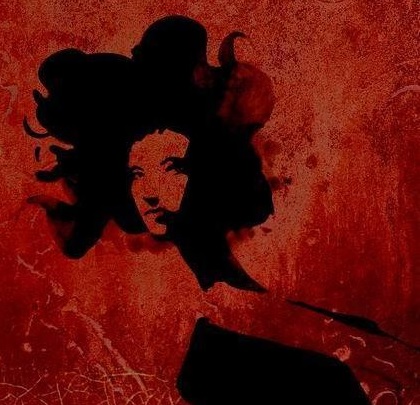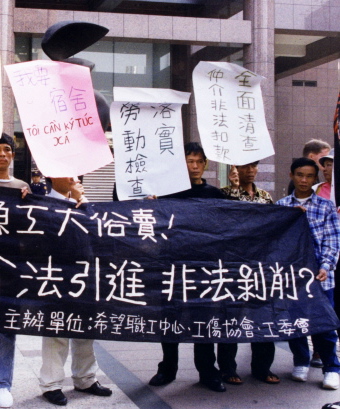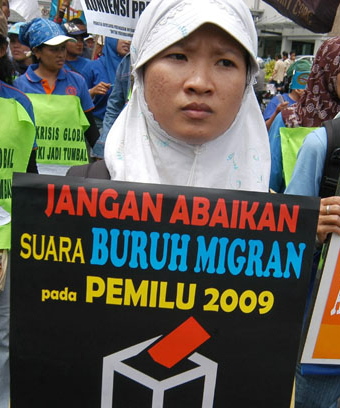A writer pays homage to the women writers and intellectuals who paved the way for others
I started to think about literary influences more frequently after answering some questions on books for a column called ‘Bookworm’ in The Jakarta Post in late 2014. Every week or so, the Indonesian-based English language newspaper would feature someone – mostly a writer, musician, actor or director – and his or her three favourite books along with their front covers in the newspaper’s print edition.
I came up with three that changed my perspective on the craft of fiction writing: Mary Shelley’s Frankenstein, Budi Darma’s Orang-orang Bloomington (The People of Bloomington) and Shakespeare’s plays. Then, in guilt, I asked myself: Why only one woman writer? Three is such a cruel number! Would I include more women writers in a longer list? Margaret Atwood, definitely. What about Judith Butler and Melani Budianta? They are not fiction writers but I would call myself a graduate of the Butler and Melani schools of thought. Why am I so anxious about including women in my list? Perhaps, in thinking about influences, I am haunted by the practice of erasure. After all, making a list is about selecting some and annihilating others.
A writer’s ‘anxiety of influence’, according to literary critic Harold Bloom, derives from the fear that he cannot free his creation from the works of his precursors. Only through an Oedipal struggle, a battle against literary predecessors, can ‘a strong poet’ justify the validity of his writing. Sandra Gilbert and Susan Gubar, in their seminal book on nineteenth century women’s writing, The Madwoman in the Attic (1979), point out that Bloom’s Freudian approach to literary genealogy is ‘intensely (even exclusively) male, and necessarily patriarchal’. The relationship between literary artists is expressed in gendered terms, and the anxiety can only be resolved through warfare between fathers and sons.
How, then, does a woman writer fit into this masculine model of literary genealogy? Gilbert and Gubar ask, ‘Does she want to annihilate a “forefather” or a “foremother”? What if she can find no models, no precursors?’
Asking myself the names of women who have influenced my work is more than just an act of namedropping. Names are, in fact, not easily dropped, especially in the context of literary and intellectual history in Indonesia. Women’s names are often forgotten, ignored or erased. Tracing the genealogy of women writers and intellectuals that shape my writing is a conscious feminist practice.
***
Harold Bloom is, undoubtedly, known for his influential work in the formation of the western literary canon. Evoking his paradigm in a third world context such as Indonesia poses another complexity. While part of local writers’ training is reading works by white male authors canonised by Bloom, there is always a desire for a national literary history. Playwright Arifin C Noer, for instance, claims both the East Javanese artistic tradition and Eugene Ionesco’s plays as his influences. Indonesian writers have been inspired by literary works from within and outside national boundaries, from William Faulkner to Sapardi Djoko Damono. The discourse of literary influences has always projected both national and cosmopolitan aspirations, as Asrul Sani puts it, ‘We are the legitimate heirs to world culture’. Yet the discussion about adapting, borrowing and stealing literary works has been predominantly male, thus to some extent echoing Harold Bloom’s world of fathers and sons.
When Eka Kurniawan published Cantik Itu Luka (Beauty is a Wound) in 2002, Indonesian writers and critics immediately compared him to Pramoedya Ananta Toer and Gabriel García Márquez. Back then, it was not as celebrated as in The New York Times’ reviews. Eka surely found his avid fans, but some hard-nosed commentators – in a rather condescending way – criticised it for being ‘too heavily influenced’ by Márquez. Eka, as he is today, remained cool.
Three years later I encountered a different kind of response when I published Sihir Perempuan (Black Magic Woman). I was placed, if not stereotyped, in the box of ‘women writers’. Most readers and critics were not busy interrogating my literary influences. Women writers emerging in the mid 2000s were judged on whether or not they wrote about bodies, sex and sexuality like Ayu Utami, Fira Basuki or Djenar Maesa Ayu, who had gained popularity a few years earlier.
The link between women’s literature and themes around the body, desire and sexual pleasure has illuminated the political ways in which women challenge restrictive norms pertaining to gender and sexuality entrenched in the authoritarian period in Indonesia. Nevertheless, it has produced some repercussions that many women writers find confining, including the essentialising view that creates a dichotomy between aesthetic exploration in male writing and sexuality in female writing, between the father’s pen and the mother’s body.
With their new articulations, Ayu Utami and others were often portrayed as if they had no lineage, as if their emergence was a complete break from history. Returning to the question posed by Gilbert and Gubar: Did these women find no models in literary history? Were they orphans? Perhaps. Djenar Maesa Ayu, in her public interviews, always mentions her three literary gurus: Seno Gumira Ajidarma, Budi Darma and Sutardji Calzoum Bachri. Women writers have no women teachers; they are not encouraged to find a lineage that connects them to women writers before them.
Writers in the 1970s and 1980s such as La Rose, Ike Supomo, Titi Said and – sometimes – NH Dini were dismissed because their works were not considered serious enough. Jakob Sumardjo, one of Indonesia’s most prominent literary critics, wrote that women’s writing was more concerned with romance and domestic matters. Women occupied a marginal space in literary history, and any subversive gestures were normalised within the rubrics of the private and the domestic.
When I started publishing and getting to know people in the literary field, fellow writers and literature enthusiasts were immersed in conversations about the influences of Latin American writers, from Márquez to Bolaño. Borges’ collection of short stories had been recently translated. Surprisingly, there was no mention of Clarice Lispector.
My heroes were rather different, and they were not popular among writers at that time. I read works by Mary Shelley, Margaret Atwood and Anne Sexton. Mary Shelley’s Frankenstein was the one that inspired me to play with the conventions of the horror genre. Toeti Heraty’s poem about the Balinese sorceress Calon Arang led me to write about bad women in fiction and history.
***
It is perhaps quite clear that my creative process as a writer was informed by my background as an English literature student. I encountered Gilbert and Gubar’s The Madwoman in the Attic when I wrote an undergraduate thesis on Mary Shelley’s Frankenstein. But more importantly, the English department of the University of Indonesia (UI) was the place where I was taught by women to read women’s works. When I taught a course called ‘Feminist Literary Criticism’ at UI in 2003-2004, I inherited the class from Professor Soenardjati Djadjanegara, who published a textbook of the same name.
Most of my professors were women. Due to the gendered division of academic fields, particularly during the Suharto technocratic regime, male students were pressured to study Science and Engineering. Consequently, most students in my cohort were women. The English department was the hub of women intellectuals, a privileged space that ensured that we would not only study writings by dead white male authors. At the same time, it was critical of the biases of race and class in the feminist movement. In my classes in the late 1990s, I read works by Toni Morrison, Jhumpa Lahiri and Arundhati Roy. Roy and Morrison taught me about pain, and Lahiri taught me about subtlety.
The most influential woman intellectual on my journey as a writer has been Melani Budianta, my undergraduate thesis supervisor. I learned that she herself was an advisee of another woman professor in the late seventies. Melani’s thesis on Harold Pinter’s plays was supervised by the late Tuti Indra Malaon, a brilliant film and theatre actress who worked closely with director Teguh Karya and Teater Populer. Not many people knew that Tuti was more than just a film star; she was a dedicated university professor who taught drama and edited an important anthology of writings about Indonesian theatre. I like to think of this feminist lineage. Melani Budianta is my intellectual surrogate mother, just like she is the legacy of Tuti Indra Malaon. Of course, the department is richer than that. I am not the only woman writer or intellectual to have been produced by the department, and Melani is not the only feminist professor (Manneke Budiman, my former professor, is well known as a male feminist literary critic).
Melani Budianta taught me about the link between writing and activism. As a student I was surprised to read her open letter in Media Indonesia, stating her disappointment in the minister of women’s empowerment with regard to the violence against ethnic Chinese women in May ‘98. At that I time I kept wondering: How could such a petite woman professor express so much rage? Melani’s scholarly work is inseparable from her position as a feminist activist. In one of her journal articles, she reflects on the achievements and failures of the Indonesian women’s movement, in which she was deeply involved, during the early years of reformation. Melani was probably the reason why I became a scholar. Her subtle and eloquent writing styles have informed both my scholarly and literary works.
Another woman intellectual that inspired me is Julia Suryakusuma, who foregrounded the concept of ‘state ibuism’ (state motherism) to analyse the roles of women in the Suharto period. I constantly refer to her work in my scholarly writings on gender, sexuality and media in Indonesia. The construction of motherhood also serves as a fundamental question in my collection of short stories Sihir Perempuan.
***
Being trained by women intellectuals and teachers to acknowledge works by women, I now turn my attention to the strengths of writing by women writers. I was in college when Ayu Utami’s Saman came out. I found that some parts of the novel were rather pedantic. But in the late 1990s and early 2000s, many women writers – from Dewi Lestari to Dewi Sartika – used philosophical or academic jargon extensively in their books. Could this be what Gilbert and Gubar call the anxiety of authorship? Did the male-dominant literary field pressure women to prove that they were legitimate intellectual beings? Jargon aside, I admired Ayu Utami’s way of blending – often uncomfortably – images of modern women and those of mythic women. In her second book Larung, the story of Larung’s grandmother evokes the myth of Leak, a sorceress in Balinese culture, to tell the story of a communist-affiliated woman.
The myth of the Balinese witch also appears in Calon Arang: Perempuan Korban Patriarki (Calon Arang: A Female Victim of the Patriarchy) by poet-cum-scholar Toeti Heraty. It was after reading her long poem that I started to think about witches and patriarchy. In Sihir Perempuan, the witch imagery translates into various characters, from a sexy divorcee – the spinner of darkness – to an ordinary housewife.
I gave myself the homework of exploring works by women writers that I did not know well, such as Soewarsih Djojopoespito, who wrote in Dutch, and Aryanti (the pen name of Haryati Soebadio), who wrote stories in various genres including horror. I also felt that I had to be curious about what I thought I knew (and who does not know Kartini, a writer cursed with being turned into the New Order icon of femininity?). I tried to read familiar women’s writing in a different light. As a 16-year-old girl, I enjoyed NH Dini’s stories of travel and romance in high school. However, I found something more complex when I read her books again in my mid-20s, after I published Sihir Perempuan. Being away from home, in California back then, I could relate to NH Dini’s ideas about the transgression of national boundaries and more fluid conceptions of identity. My more recent work of fiction engages more with the issues of travel and displacement, and it is a pleasure to be able to reconnect with – as well as complicate – the cosmopolitan perspectives in NH Dini’s novels.
Efforts have been made – by Claudine Salmon, Korrie Layun Rampan, Toeti Heraty and Pamela Allen, for instance – to document and analyse works by women writers and challenge their invisibility in Indonesia’s literary history. The latest was Indonesian Women Writers (2015), a collection of essays, stories and interviews edited by Yvonne Michalik and Melani Budianta. The question of whether such efforts will succeed depends on the cultural, financial and institutional factors that affect the circulation of these books.
This essay is an homage to women writers and intellectuals who have, in various ways, shaped my thinking and creative processes. Yet it is not enough. The dismissal of women’s viewpoints in history is not exclusively an Indonesian problem; in an article published by The Guardian, a publisher finds that authors they have surveyed acknowledge mostly male writers as their influences. I believe that an author, male or female, should engage in the feminist practice of finding the traces of women’s voices, thoughts and writing in their work. If traces are nowhere to be found, perhaps one needs to begin with the question why.
*An earlier version of this essay was presented at the ‘70 Years of Textual Production in Indonesia’ conference at Goethe University (12–13 October 2015) in conjunction with the Frankfurt Book Fair, where Indonesia was guest of honour in 2015.
Intan Paramaditha (intanparamaditha.org) is an Indonesian author whose fiction publications include Sihir Perempuan (2005) and Spinner of Darkness & Other Tales (2015; English and German translations by Stephen Epstein and Pauline Kurbasik). She holds a PhD from New York University and currently teaches Media and Film/Screen Studies at Macquarie University, Sydney.
Inside Indonesia 124: Apr-Jun 2016















